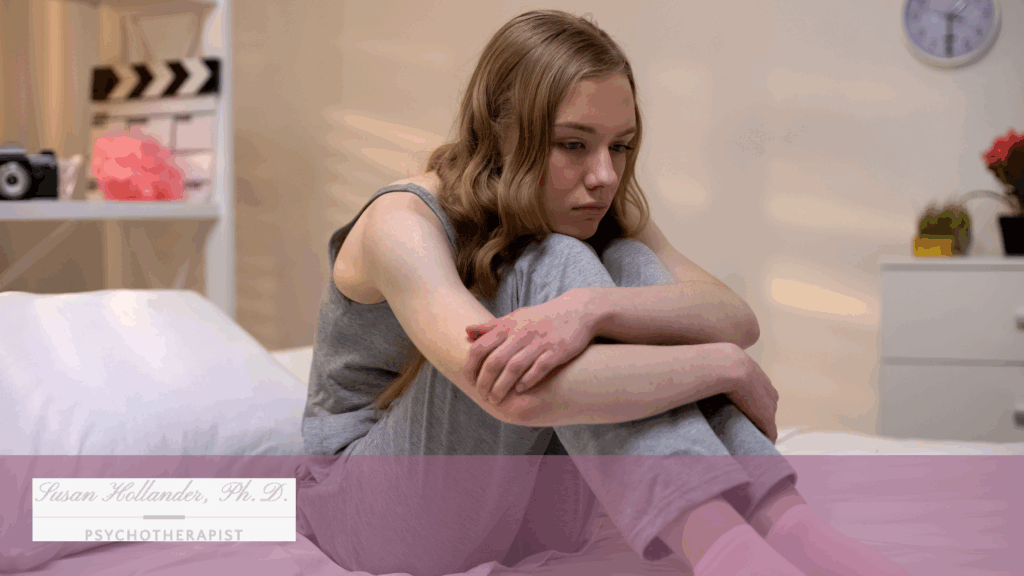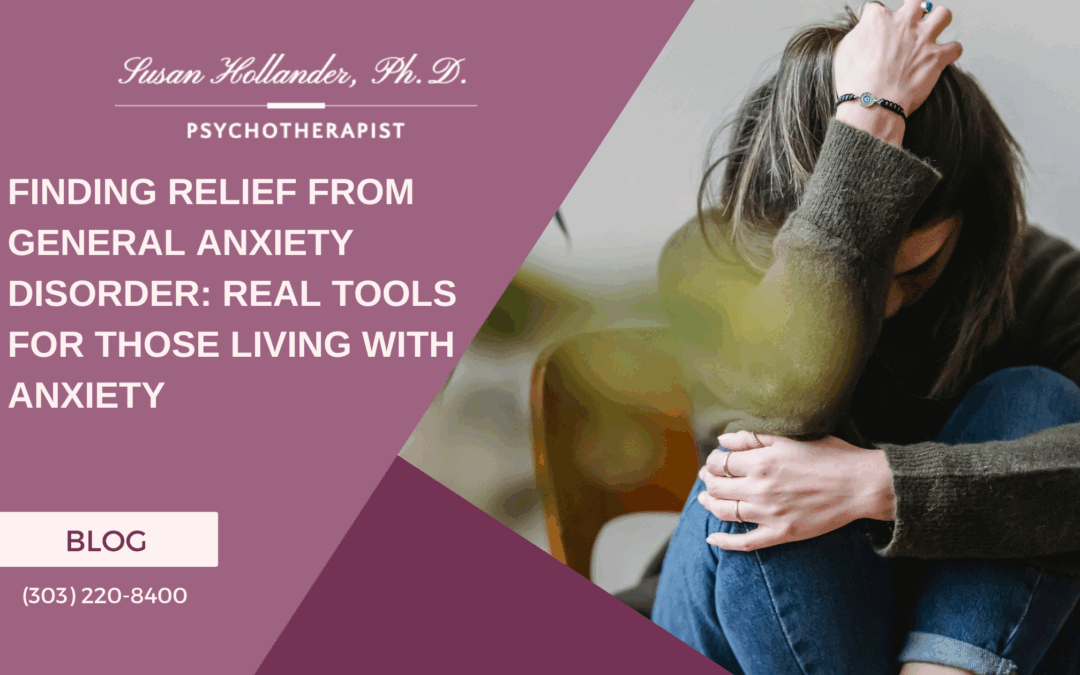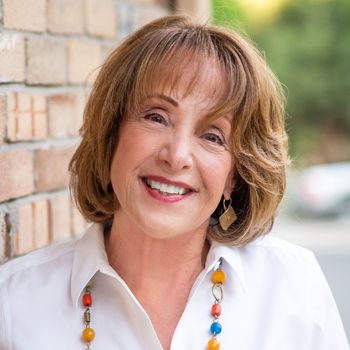General Anxiety Disorder (GAD) affects more than just mood—it shapes how people think, feel, and function. I’ve sat across from many individuals who live with GAD and have seen firsthand how deeply it influences their mental health.. I’ve watched as intelligent, thoughtful, caring people describe what it’s like to feel as though they’re perpetually bracing for something that never quite arrives. Like waiting for a storm that no one else sees, but your body is convinced is coming.
GAD is not just “worrying too much.” It’s a persistent, often overwhelming state of fear, tension, and hypervigilance that can cause significant distress and affects even the most ordinary moments. You may find yourself lying awake at night with your heart racing, replaying conversations, catastrophizing outcomes, or simply feeling that vague but relentless sense that something is off, even when everything around you appears fine.
Why Managing GAD Matters
When you’re living with GAD, your nervous system becomes your constant companion in discomfort. Managing GAD means gently teaching your mind and body to feel safe again. Reclaim your mornings, your sleep, your focus, and your peace.
According to the Anxiety and Depression Association of America, GAD affects around 6.8 million adults in the U.S., yet less than half receive treatment (1). That statistic speaks volumes. It tells us not that people aren’t struggling, but that they may not realize help is possible or that they’re worthy of it.
If you’re reading this in the quiet of the night, wondering why your mind won’t let you rest, I want you to know: you’re not broken. You’re not weak. You’re facing something incredibly challenging, and you don’t have to do it alone.
The Lived Experience: A Window Into What It Feels Like

A visual portrayal of the emotional isolation often experienced by individuals living with Generalized Anxiety Disorder (GAD).
I often hear clients describe moments like this:
“I was brushing my teeth, and suddenly I felt like I forgot to cancel my credit card. My chest tightened, my breath quickened, and even though I knew I had already done it, I couldn’t let it go.”
These are the everyday experiences of someone living with GAD. The constant checking. The second-guessing. The inability to exhale even during the calm.
And it’s exhausting.
What Helps: Calming the Mind and Soothing the Body
There’s no one-size-fits-all approach to managing GAD, but there are evidence-based strategies that I’ve seen work wonders when applied with consistency and compassion. Whether through Cognitive Behavioral Therapy, mindfulness practices, gentle movement, or exploring the root of long-held fears, relief is possible.
New techniques and hope are a potent combination. Recognize that your symptoms have a name, and that name comes with treatment options. Learn to relate to your thoughts differently, to ground yourself in the moment, and to trust that your nervous system will soften over time.
What are the most effective ways to manage Generalized Anxiety Disorder (GAD)?
Let me walk you through what I’ve seen truly help people reclaim their lives from the grip of excessive anxiety. Whether it’s through talk therapy, anti-anxiety medications, or gentle lifestyle changes, the metric for managing GAD is daily progress.
1. Cognitive Behavioral Therapy (CBT)
One of the most evidence-supported ways to treat GAD is Cognitive Behavioral Therapy (CBT). CBT works by helping individuals identify distorted thinking patterns and replace them with healthier thinking patterns. I often describe it as learning to talk back to your anxiety with calm, grounded logic.
For example, a thought like: “If I don’t respond to this email perfectly, I’ll get fired.”
Becomes: “Have I ever been fired for a minor email misstep before? Is this a fact or a fear?”
Research supports CBT as a highly effective treatment for various psychiatric disorders , especially for individuals with generalized anxiety disorder (GAD). Studies show that CBT can help up to 60% of people with GAD experience lasting symptom relief, even without the use of medication (Mayo Clinic).
2. Daily Movement
You don’t need to run marathons or sign up for high-intensity classes. Many of my clients have found relief by going for a quiet walk, stretching while music plays softly in the background, or even pacing the room while folding laundry.
Rhythm, rather than intensity, is the key to change.
Movement helps regulate cortisol, our body’s primary stress hormone, and naturally boosts serotonin and dopamine, the same feel-good chemicals that support a more balanced mood. For those whose brains are often caught in a loop of persistent fear or excessive worry, these biochemical shifts feel like the nervous system exhaling.
On the days my clients move even briefly, they often report better sleep, fewer racing thoughts, and a greater sense of emotional spaciousness. And that’s what we’re really after: not perfection, but moments of peace woven gently into daily life.
3. Anti-Anxiety Medication (When Needed)
For many living with generalized anxiety disorder (GAD), the inner noise feels relentless, like the mind is always on high alert. In these moments, I often have to remind clients that anti-anxiety medications are not a sign of weakness or failure, such is the stigmatization that stull surrounds using meds.
One of many available medications such as Selective Serotonin Reuptake Inhibitors (SSRIs) or Serotonin Norepinephrine Reuptake Inhibitors (SNRIs) are commonly prescribed to help rebalance brain and biological processes involved in mood regulation, especially serotonin and norepinephrine. These medications ease symptoms like muscle tension, difficulty concentrating, and that constant hum of excessive anxiety.
A study published in The Lancet Psychiatry found that SSRIs and SNRIs were more effective than placebo in treating GAD, especially when combined with therapy.
Of course, anti-anxiety medications are not for everyone. But if your anxiety feels like it’s running the show, disrupting your daily life, clouding your focus, and making even simple decisions feel overwhelming, it may be time to speak with a trusted mental health professional or physician. Together, you’ll explore whether medication could offer the support your nervous system needs to rest, reset, and begin healing.
You deserve relief. And you have options.
4. Sleep Hygiene: Creating a Restful Space for a Restless Mind
In my work with individuals living with generalized anxiety disorder (GAD), sleep is one of the first areas we explore. Not because it’s a magic fix, but because poor sleep and anxiety often fuel one another in a quiet but powerful loop.
Many of my clients describe lying in bed with their thoughts racing, worrying about the day that just passed, the one ahead, or something undefined but looming. Then, they begin to worry about how little sleep they’re getting, which only deepens the cycle of restlessness.
An article published by the Sleep Foundation explains that people with GAD are more likely to experience insomnia, and poor sleep intensifies symptoms the next day. It’s a cycle worth breaking.
The good news? This cycle can be interrupted with care, intention, and a few gentle shifts in routine.
I often recommend what’s known as sleep hygiene:
- Dimming lights in the evening to signal wind-down time
- Avoiding screens or stimulating content before bed
- Establishing a consistent bedtime, even on weekends
- Creating a calming routine, such as a warm shower, soft music, or a quiet book
- Keeping a notebook by the bed to gently “unload” anxious thoughts instead of carrying them into sleep
Sleep is a rudimentary part of how we care for our minds, our bodies, and our ability to heal.
5. Reducing Caffeine: Gently Releasing What No Longer Serves You
Caffeine is one of the most socially accepted stimulants we consume and one of the most overlooked contributors to anxiety symptoms in individuals living with generalized anxiety disorder (GAD).
Caffeine stimulates the central nervous system, increasing adrenaline, heart rate, and arousal effects that closely mimic or exacerbate the physical sensations of GAD. This makes it incredibly difficult to discern whether you’re experiencing anxiety or just a biochemical reaction to what’s in your mug.
You don’t have to give it up entirely to feel a difference. Some of my clients have simply reduced their intake to one small morning cup, switching later beverages to decaf, chamomile, lemon balm, or other calming teas that nourish rather than stimulate.
A 2024 meta-analysis published in Frontiers in Psychology found that caffeine intake significantly increases the risk of anxiety in healthy individuals, with high doses (≥400 mg) having a particularly strong effect on anxiety’s physical symptoms. The findings suggest a clear anxiogenic effect of caffeine and underscore the importance of monitoring intake, especially for those prone to anxiety disorders.
6. Grounding Techniques That Work in Real Life
There are moments I hear about often in therapy sessions when a person’s mind begins to spiral at the most unexpected places. In the grocery store checkout line. Sitting in traffic. Mid-conversation with a colleague. The thoughts feel distant from the present moment, yet they take over completely.
This is where grounding techniques are incredibly effective. They help bring the mind back into the body, back into the now. I often describe them as a gentle invitation to return home to yourself.
Here are two I’ve seen work again and again:
The 5-4-3-2-1 Method
This simple sensory technique can be used anytime, anywhere, with no tools or preparation required:
- 5 things you see
- 4 things you can touch
- 3 things you hear
- 2 things you can smell
- 1 thing you can taste
This exercise reorients your awareness to your physical surroundings. It’s like handing your mind a flashlight in a dark room, helping it find its way out of the loop of excessive worry or difficulty controlling anxious thoughts.
Temperature Therapy
Certain physical sensations interrupt the brain’s panic signals by activating the vagus nerve, which plays a key role in regulating the nervous system. I recommend trying:
- Holding an ice cube in your hand
- Splashing cool water on your face
- Running your hands under warm water
These sensory shifts signal to the body: You are safe right now.
Grounding does not eliminate anxiety altogether but helps your body remember what it feels like to be steady, even in brief moments. And those moments build on each other.
7. Talking About It—Even When It Feels Uncomfortable
For many individuals living with generalized anxiety disorder (GAD), opening up about their experience feels incredibly vulnerable. I’ve had clients describe it as feeling “dramatic” or “too much,” even when the emotional weight they’re carrying is deeply real.
But here’s what I’ve learned, both as a therapist and as a compassionate witness: silence rarely soothes anxiety. In fact, it often amplifies it.
Holding everything inside those spiraling thoughts, the persistent feelings of dread, and the fear of being judged make the experience of GAD feel more isolating. But speaking it aloud, even just a little, will begin to loosen its grip.
You don’t have to start big. Many of my clients began by talking with a mental health professional, someone trained to hold space without judgment. From there, some shared with a trusted friend or family member. Others joined a support group, sometimes in person, sometimes online through platforms like Facebook.
And time after time, I hear the same thing: “I didn’t expect to feel so seen. And I definitely didn’t expect to laugh.”
Because when we share openly with others who understand, something remarkable happens: we realize we’re not alone. And that “me too” can be more healing than any advice.
Whether you cry, laugh, vent, or simply sit in silence among others who “get it,” connecting with people who understand the lived experience of anxiety disorders is powerful medicine.
You don’t have to carry it alone. And you were never meant to.
8. Mindfulness: A Simple Return to the Present
I often hear from clients that mindfulness initially sounded a little too abstract, like something reserved for monks on mountain tops or people who chant in the forest. But in reality, mindfulness is something beautifully ordinary.
At its core, mindfulness is the practice of noticing. Noticing when your thoughts are pulling you into excessive worry, gently recognizing that tug, and choosing, without judgment, to return to the here and now.
For individuals living with generalized anxiety disorder (GAD), mindfulness is a steadying anchor. Anxiety often lives in the future, imagining what might go wrong, what hasn’t been done, or what could unfold next. Mindfulness invites us back into the moment, where our feet are, where our breath is.
Many of my clients begin with short, guided practices just 5 or 10 minutes a day. Apps like Insight Timer offer free options, from soft ocean sounds to quiet affirmations that remind you: You are not your thoughts. You are the awareness behind them.
A study from Johns Hopkins University analyzed over 18,000 mindfulness studies and found that mindfulness meditation improves anxiety, depression, and pain with results comparable to antidepressants.
It won’t solve everything overnight, but it will give your mind a place to rest. And sometimes, just a few quiet moments of stillness shifts the entire tone of the day.
How do I know if I have GAD or something else, like panic disorder or social anxiety?
GAD is marked by ongoing, excessive worry about a wide range of everyday things, while panic disorder involves sudden, intense panic attacks, and social anxiety disorder is centered around fear of social interactions or judgment.
If you feel like your thoughts are stuck on repeat, spinning through every possible scenario of what could go wrong, and it’s been like this for months, it might be GAD. Panic disorder is like a sudden thunderstorm. GAD is a constant drizzle that never lets up.
Can Therapy Really Help with GAD Symptoms?

A moment of stillness by the sea—representing the peace and clarity that can follow emotional healing and anxiety relief.
Yes, therapy is incredibly effective in treating generalized anxiety disorder (GAD). In my practice, I use a variety of therapeutic approaches tailored to each individual’s experience, because anxiety isn’t one-size-fits-all, and neither is healing.
While Cognitive Behavioral Therapy (CBT) is well-known for helping individuals reframe distorted thinking, I often begin by helping clients gently explore the roots of their anxiety. We look at family history, early relational experiences, and patterns of emotional response. Sometimes, persistent anxiety is tied to unspoken fears or beliefs that have never been fully explored until we give them a safe place to surface.
We also work on:
- Understanding patterns of fear: What triggers that rush of unease? What’s underneath it?
- Relaxation techniques: From guided breathwork to progressive muscle relaxation, learning to calm the nervous system is a skill you’ll practice and strengthen over time.
- Problem-solving techniques: We identify real-life stressors and build confidence in your ability to manage them, step by step.
- Psychodynamic psychotherapy: This deeper form of talk therapy helps uncover unconscious drivers of excessive anxiety and creates space for lasting emotional insight and healing.
- Learning to self-affirm: Many individuals with GAD struggle with harsh self-criticism. I help clients practice compassionate self-talk and develop a more supportive inner dialogue.
Because You Deserve to Feel Safe in Your Own Mind
Living with GAD symptoms feel like you’re constantly on high alert, scanning for danger in a world that’s already moving too fast. And yet, you show up, you work, you love, you try. That strength is not invisible, and neither is your struggle.
Therapy doesn’t “fix” you, but opens a channel of understanding between your patterns, your fears, and endeavors to find new ways of relating to the world and to yourself. Through tools like relaxation techniques, problem-solving strategies, and psychodynamic psychotherapy, we’ll work together to help you move from surviving to thriving.
Suppose you’re experiencing difficulty concentrating, trouble relaxing, or you’re simply tired of feeling overwhelmed by excessive anxiety or that persistent feeling that something’s wrong. In that case, you don’t have to keep pushing through alone; there are ways to manage severe forms of anxiety .
My practice is a place where you will exhale. A place where your experience is honored, and where small shifts lead to meaningful change. Whether you’re exploring therapy for the first time or returning to it after a difficult chapter, I’ll meet you where you are with patience, compassion, and genuine care.
You’ve already taken a brave step just by reading this far. Let’s take the next one together as we work to reduce anxiety in your life .
- Reach out today, and let’s begin creating space for your healing.
- Curious what it’s like to work together? Here’s what to expect.
- Prefer the comfort of home? Explore online therapy.
Your path forward may not be linear, but it can be full of grace.
And you don’t have to take it alone.
With warmth and encouragement,
Dr. Susan Hollander, Ph.D.
Psychotherapist | Healing, one conversation at a time
Frequently Asked Questions About Generalized Anxiety Disorder (GAD)
What is Generalized Anxiety Disorder, and how do I know if I have it?
Generalized Anxiety Disorder (GAD) is a common and treatable mental disorder. People with GAD feel extremely worried most days, even when there’s little or no reason. These worries affect your daily functioning, sleep, and ability to concentrate.
If you’ve been experiencing ongoing worry, muscle aches, or difficulty controlling your anxiety for more than six months, it may be time to seek professional support. A licensed provider will often use criteria from the Diagnostic and Statistical Manual of Mental Disorders, also known as the DSM-5, to assess your symptoms.
Can therapy really help with GAD symptoms?
Yes, absolutely. Therapy is one of the most effective ways to reduce anxiety symptoms. In my practice, I often use Cognitive Behavior Therapy (CBT) to help people replace unhelpful thought patterns with healthier ones. We also explore deeper roots of anxiety through psychodynamic work and stress management techniques.
Therapy offers tools, support, and understanding especially when symptoms feel overwhelming or when they occur for long periods.
What causes GAD?
There isn’t one single cause. GAD often develops from a mix of biological processes, environmental factors, family history, and life experiences. Some individuals may be more sensitive to stress due to genetics, a traumatic event, or growing up in a stressful environment.
People with GAD may also have a higher risk of experiencing other mental disorders, such as depression, obsessive compulsive disorder, or specific phobias.
What are the most common GAD symptoms?
People with GAD may experience both emotional and physical symptoms, including:
- Excessive worry or trouble controlling thoughts
- Difficulty breathing or relaxing
- Muscle tension, muscle aches, or unexplained pains
- Sleep problems
- Feeling restless, tired, or irritable
- Trouble focusing or feeling like your mind goes blank
These gad symptoms feel very real even if there isn’t a clear trigger.
What treatments are available for GAD?
GAD is generally treated with a combination of:
- Talk therapy, such as CBT or acceptance and commitment therapy
- Anti-anxiety sedative medications or antidepressants that help treat depression and regulate mood
- Stress management techniques like breathwork, movement, and sleep hygiene
- Lifestyle changes including reducing caffeine intake, prioritizing sleep, and setting healthy boundaries
In some cases, your provider may prescribe medication if your symptoms are severe or not improving with therapy alone.
Is it normal to feel anxious sometimes?
Yes. Everyone experiences occasional anxiety especially during stressful times. But when that anxiety becomes persistent, hard to manage, or affects your ability to function, it may be something more.
There’s a difference between feeling worried before a big event and developing GAD, where the anxiety lingers even when there’s no clear reason.
Can substance abuse make anxiety worse?
Yes. Substance abuse, including alcohol, caffeine, or recreational drugs, make gad symptoms worse over time. These substances may provide short-term relief but often intensify symptoms like difficulty breathing, muscle tension, and excessive worry. If this feels familiar, your provider will help address both your anxiety and substance use with care and without judgment.
What should I do if I think I have GAD?
If you’ve been experiencing ongoing worry, tension, or anxiety that’s difficult to manage, I encourage you to seek professional support. GAD is very treatable and you don’t need to manage it alone.



Recent Comments